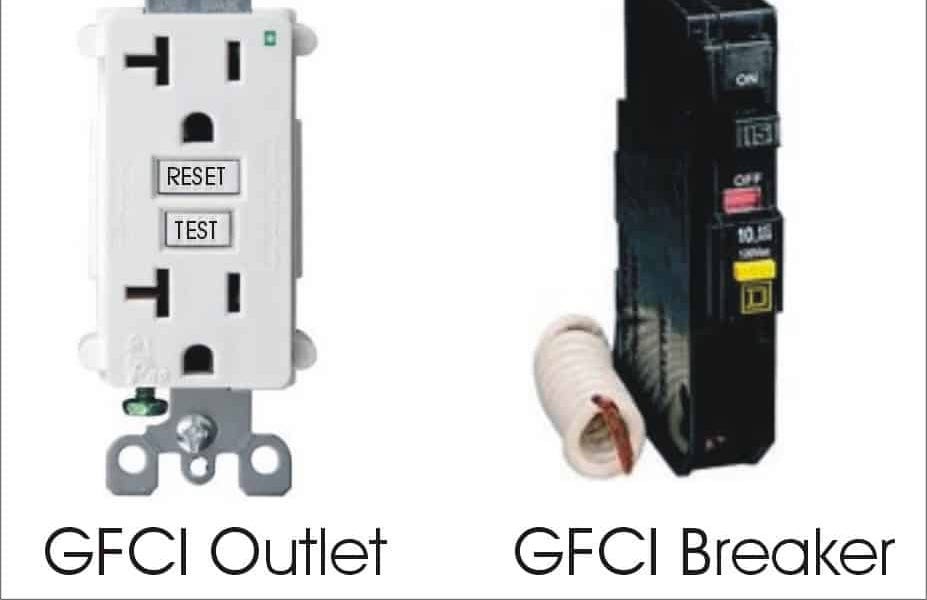Hey Mike,
Need your expertise. Years ago we carried a cheap tent trailer brand (no 120 volt appliances) and the incoming 120 volt AC (20 amp- maybe 15) power cord went directly into the back of a GFCI outlet,(no breaker box or distribution panel) from there it fed a cheesy small converter to power the 12 volt DC lights. I was mentioning using a GFCI to protect a small circuit (from overload) my son is adding to his garage. He was surprised to learn it would also act as a circuit breaker.
So I googled it to double check. I found many posts that stated that a GFCI only checks for an imbalance and faulty ground and is not a circuit breaker, but I did find the post below that confirms what I told my son.
Which is it? You are the only one I trust for a solid answer. I suspect you have tested this personally. Saves me from overloading one to see what happens! Let me know when you get a chance.
Thanks, Dave H
Hey Dave,
That’s an urban myth that refuses to die. A GFCI outlet (shown below Left) has no overcurrent protection at all and will happily melt down from excessive amperage without tripping. It only trips from an unbalanced current greater than 5mA caused by a fault leakage to earth or chassis ground.
GFI Outlet on Left - GFCI Breaker on Right
On the other hand, a GFCI circuit breaker (above right) has both an unbalanced current tripping function as well as overcurrent protection.
AFCI/GFCI Combo breakers are the latest thing
You can also get a combo AFCI/GFCI breaker that includes Arc Fault Circuit Interrupter, Ground Fault Circuit Interrupt and Over Current protection.
Read my full article on GFCI theory by clicking HERE
Let’s play safe out there… Mike





